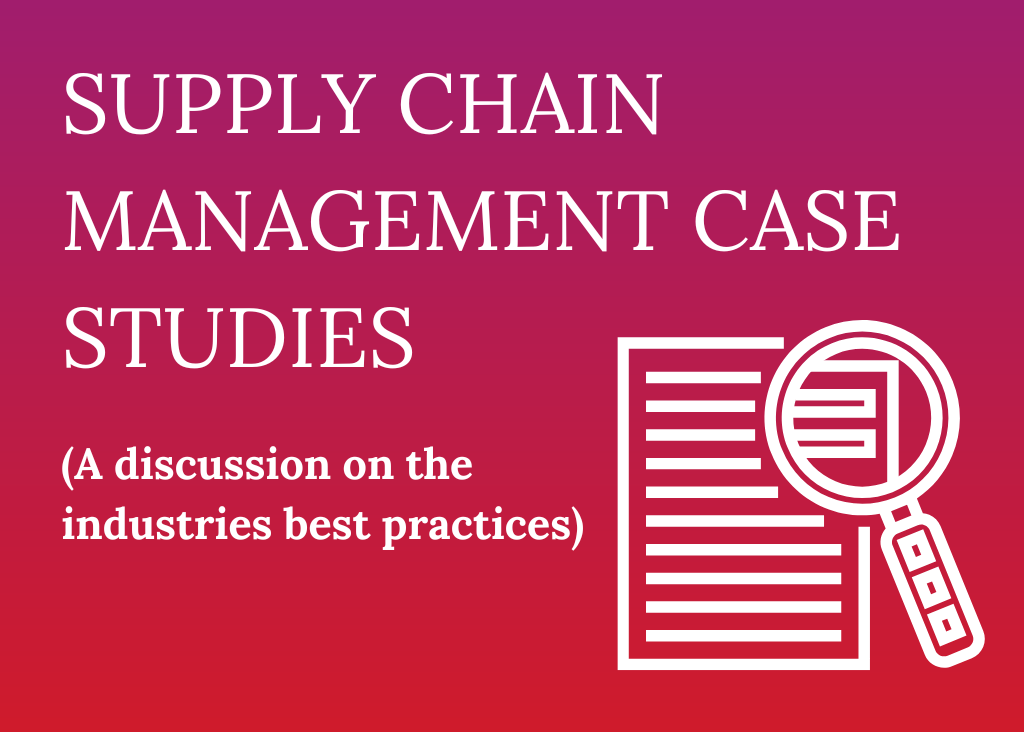Supply Chain Management Case Studies
- Prabal Laad

A good supply chain strategy is oftentimes holistic in nature, meaning the entire ecosystem of the organisation is assessed with the aim of developing a supply chain that delivers to the organisation’s strategic goals. And technology is not always the only means to deliver on this promise, as in some instances, the supply chain can be improved with small changes elsewhere – perhaps People and Process, or a combination of the two.
Nonetheless, using software like Oracle Cloud is still a key feature of our service and at InspireXT we frequently recommend the incremental adoption of these tools so that the supply chain is on a gradual process of evolution towards greater integration and meeting the larger strategic goals.
In the remainder of this article, we will discuss a few internal and external case studies which should help explain this process.
Supply Chain Case Study – Internal

Due to privacy concerns, we are unable to directly name any of our clients in a blog post. However, we can say that this client is a globally recognised brand operating in the luxury goods space.
They came to us looking for a supply chain solution that would be incremental in nature, so that it did not require drastic realignments of their existing architecture, whilst also offering a range of quantitative and qualitative benefits. So, we provided a roadmap that would gradually add the latest Cloud technology to the company’s existing ecosystem. We have found that this modular introduction of technology increases uptake across the organisation and is much better at delivering on business benefits.
With our strategy in place, our client began to see results:
- Customer satisfaction index improved and this in turn caused an increase in repeat buying behaviour.
- A more efficient end-to-end supply chain which reduced the company’s working capital requirements.
- Increased overall throughput.
Companies founded over 10 years ago all require some degree of digital transformation. The pace of change driven by new technology and enhanced customer expectations has ensured that a re-think of the customer value proposition is necessary. Our client in the luxury goods space was thankful that our strategy did not recommend a drastic, risky, and expensive overhaul of their entire ecosystem and was instead a modular approach designed for a gradual evolution into a digital supply chain.
Supply Chain Case Study – External
Perhaps one of the best external case studies on the supply chain concerns one of the world’s leading cosmetics company which, in the interest of the company, shall remain anonymous. This global brand is the world’s largest cosmetics/personal products company with sales of nearly £20 billion a year.
The company outperforms its peer group in several key metrics including operating margin, inventory turns, return on invested capital, and market cap.
All of this is made even more astounding when you look deeper into the company’s wider strategy. The brand is a global organisation which manages and acquires local brands and takes them to a global scale in a noticeably short time frame. To do this, they have an incredibly agile supply chain and are increasingly relying on insights they get from data.

Their use of technology is hugely important because they operate in the field of Fast-Moving Consumer Goods (FMCG) where supply and demand of products are volatile. In this space, predicting and monitoring customer sentiment is a vital part of the supply chain.
All of this is made even more astounding when you look deeper into the company’s wider strategy. The brand is a global organisation which manages and acquires local brands and takes them to a global scale in a noticeably short time frame. To do this, they have an incredibly agile supply chain and are increasingly relying on insights they get from data.
Their use of technology is hugely important because they operate in the field of FMCG where supply and demand of products are volatile. In this space, predicting and monitoring customer sentiment is a vital part of the supply chain.
Theirs is an extremely complex organisation with interacting global and local governance models. This global brand is in constant contact with the local supply chains in a never-ending balancing act. The use of data insights is a vital part of this balancing act.
Similarities Between the Case Studies
The external case study we analysed displays a unique highly complex organisational structure that should serve as a good reminder to all businesses that the pursuit of an end-to-end supply chain that uses data-backed insights is achievable and desirable – regardless of your company’s layout.
All organisations are unique in their own way, and that’s why drastic overhauls of existing systems rarely work. When introducing technology, the new systems should support the existing architecture, not replace it completely.
That’s always been our approach at InspireXT, and we have experienced great success by leveraging our in-house expertise alongside incremental introductions of technology. If you want to find out more, don’t hesitate to get in touch with our team.
Request for services
Find out more about how we can help your organisation navigate its next. Let us know your areas of interest so that we can serve you better.




